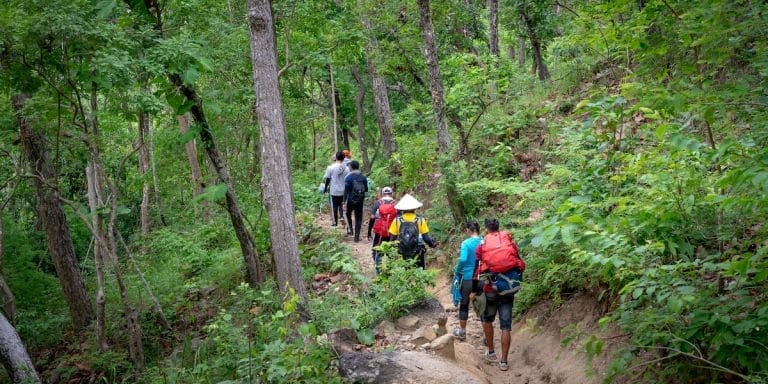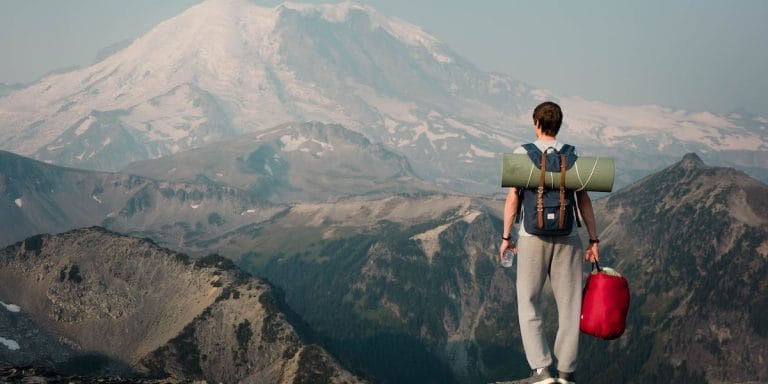Discovering the Natural Wonders of Asia
Asia, with its diverse landscapes and breathtaking natural wonders, has become a top destination for travelers seeking awe-inspiring experiences. The continent boasts an array of natural wonders that captivate the hearts and minds of adventurers from all around the world. From the towering peaks of the Himalayas to the pristine beaches of Southeast Asia, these natural wonders hold immense significance and have a profound global impact.
One of the most iconic natural wonders in Asia is the Great Barrier Reef, located off the coast of Australia. This UNESCO World Heritage site is the largest coral reef system in the world and is home to an incredible variety of marine life. The Great Barrier Reef not only attracts millions of tourists each year but also plays a crucial role in supporting the local economy through tourism and providing a habitat for countless species.
The Himalayas, spanning across several countries including Nepal, India, and Bhutan, are another natural wonder that holds immense significance. Mount Everest, the highest peak in the world, is a major draw for adventure seekers and mountaineers. However, the Himalayas are not just about climbing mountains; they also provide a vital source of freshwater for millions of people living in the region. The impact of climate change on the Himalayas has global implications, as the melting glaciers contribute to rising sea levels and affect weather patterns worldwide.
In Southeast Asia, the lush rainforests of Borneo and the majestic rice terraces of the Philippines are natural wonders that showcase the region’s rich biodiversity and cultural heritage. These natural wonders are not only visually stunning but also play a crucial role in maintaining ecological balance and supporting local communities. However, deforestation and unsustainable practices pose a threat to these fragile ecosystems, highlighting the need for conservation efforts and responsible tourism.
As travelers venture to Asia to explore its natural wonders, it is essential to be mindful of the impact of their visits. Sustainable tourism practices, such as supporting local communities and minimizing environmental footprint, can help preserve these natural wonders for future generations. By appreciating and protecting these natural wonders, we can contribute to their significance and ensure their global impact remains positive for years to come.

Imagine embarking on a journey through the enchanting landscapes of Asia, where every step unveils a new natural wonder that leaves you in awe. From the majestic peaks of the Himalayas to the vibrant coral reefs of the Great Barrier Reef, this continent is a treasure trove of breathtaking sights and experiences. As you immerse yourself in the beauty of these natural wonders, you can’t help but wonder about the profound impact they have on our planet and the urgent need to understand and protect them. A research on these mesmerizing natural wonders of Asia promises to unveil the hidden secrets and shed light on the importance of their preservation for future generations.

Natural Wonders of Asia
Asia, the largest and most diverse continent, is home to some of the world’s most breathtaking natural wonders. From towering mountains to stunning waterfalls, Asia’s natural landscapes are a testament to the beauty and power of nature. These natural wonders not only captivate the imagination but also play a crucial role in the ecological balance of the region.
The Great Barrier Reef, Australia
The Great Barrier Reef, located off the coast of Australia, is the largest coral reef system in the world. Spanning over 2,300 kilometers, it is a UNESCO World Heritage site and a haven for marine biodiversity. The reef is home to thousands of species of fish, coral, and other marine life, making it a paradise for divers and snorkelers. However, it is facing numerous threats, including climate change and pollution, highlighting the need for its preservation.
Mt. Everest, Nepal
Standing tall at 8,848 meters, Mt. Everest is the highest peak in the world and a symbol of human endurance and exploration. Located in the Himalayas, on the border between Nepal and China, Everest has attracted mountaineers from around the globe for decades. Scaling its summit is a feat that only a few have achieved, making it a coveted destination for adventure seekers. However, the mountain’s fragile ecosystem is at risk due to climate change and overcrowding, necessitating sustainable tourism practices.
The Dead Sea, Jordan and Israel
The Dead Sea, situated between Jordan and Israel, is a unique natural wonder known for its high salt concentration. It is the lowest point on Earth, lying more than 400 meters below sea level. The high salt content allows swimmers to float effortlessly on its surface. Moreover, the mineral-rich mud found in the Dead Sea is believed to have therapeutic properties, attracting visitors seeking its healing effects. However, the sea is shrinking at an alarming rate due to water diversion projects, posing a significant threat to its existence.
Ha Long Bay, Vietnam
Ha Long Bay, located in northeastern Vietnam, is a mesmerizing natural wonder characterized by its limestone karsts and emerald waters. The bay is dotted with over 1,600 islands and islets, creating a stunning seascape that has captivated visitors for centuries. Ha Long Bay is not only a UNESCO World Heritage site but also a biodiversity hotspot, home to numerous species of plants and animals. However, the bay faces challenges such as pollution and over-tourism, emphasizing the need for sustainable management.
The Great Wall of China, China
The Great Wall of China, one of the world’s most iconic man-made wonders, stretches over 21,000 kilometers across northern China. Built over centuries to protect the Chinese empire from invasions, it is a testament to human ingenuity and engineering. The wall attracts millions of visitors each year, offering a glimpse into China’s rich history and culture. However, the Great Wall faces threats from erosion, vandalism, and unregulated tourism, highlighting the importance of its conservation.

Asia, with its vast and diverse landscapes, boasts some of the most awe-inspiring natural wonders on Earth. From the majestic peaks of Mt. Everest to the vibrant coral reefs of the Great Barrier Reef, these wonders showcase the incredible beauty and power of nature.
The Great Barrier Reef, located off the coast of Australia, is a sprawling coral reef system that stretches over 2,300 kilometers. This UNESCO World Heritage site teems with a plethora of marine life, making it a paradise for divers and snorkelers. However, the reef is currently under threat from climate change and pollution, underscoring the urgent need for its preservation.
Rising high in the Himalayas, Mt. Everest stands as the tallest peak in the world. Its summit has long been a symbol of human endurance and exploration, attracting adventurers from all corners of the globe. Yet, the fragile ecosystem of this majestic mountain is at risk due to climate change and overcrowding, making sustainable tourism practices crucial for its protection.
Nestled between Jordan and Israel, the Dead Sea is a remarkable natural wonder renowned for its high salt concentration. Its unique properties allow swimmers to effortlessly float on its surface, while the mineral-rich mud is believed to possess healing qualities. Sadly, the sea is shrinking rapidly due to water diversion projects, posing a significant threat to its existence.
Ha Long Bay in Vietnam is a mesmerizing sight, with its limestone karsts rising from emerald waters. This UNESCO World Heritage site is not only visually stunning but also a biodiversity hotspot, housing a multitude of plant and animal species. However, pollution and over-tourism pose challenges to the bay’s delicate ecosystem, necessitating sustainable management practices.
The Great Wall of China, an iconic man-made wonder, stretches over 21,000 kilometers across northern China. Built as a defense against invasions, it stands as a testament to human ingenuity and engineering prowess. Millions of visitors flock to this historic site each year, eager to delve into China’s rich cultural heritage. Nevertheless, erosion, vandalism, and unregulated tourism threaten the preservation of this magnificent structure.
These natural wonders of Asia are not only awe-inspiring but also serve as vital components of the region’s ecological balance. Preserving and protecting them for future generations is of utmost importance, requiring innovative approaches and sustainable practices.

Preserving and protecting natural resources is crucial for the well-being of our planet and future generations. With the growing concern over climate change and environmental degradation, it is essential to adopt innovative approaches and sustainable practices. This includes promoting renewable energy sources, implementing efficient waste management systems, and conserving biodiversity. By prioritizing the preservation of natural resources, we can ensure a healthier and more sustainable future for all.
Case Study 1: The Great Barrier Reef
The Great Barrier Reef, located off the coast of Australia, is the largest coral reef system in the world. It is home to a wide variety of marine species and is a major tourist attraction. However, due to climate change and human activities such as pollution and overfishing, the reef is facing significant threats. Efforts are being made to protect and preserve the Great Barrier Reef, including the implementation of marine parks and the reduction of pollution.
Case Study 2: The Amazon Rainforest
The Amazon Rainforest, spanning several South American countries, is the largest tropical rainforest in the world. It is known for its incredible biodiversity and plays a crucial role in regulating the Earth’s climate. However, deforestation for agriculture, logging, and mining poses a serious threat to this natural wonder. Conservation organizations and governments are working together to protect the Amazon Rainforest through initiatives like sustainable land use practices and the creation of protected areas.
Case Study 3: The Grand Canyon
The Grand Canyon, located in Arizona, USA, is a massive gorge carved by the Colorado River. It is a stunning natural wonder known for its vibrant rock formations and breathtaking views. The Grand Canyon serves as a habitat for a diverse range of plant and animal species. Efforts are being made to preserve the unique ecosystem of the Grand Canyon, including limiting development and promoting responsible tourism.
These case studies highlight the importance of preserving and protecting natural wonders such as the Great Barrier Reef, the Amazon Rainforest, and the Grand Canyon. By understanding the challenges they face and implementing sustainable practices, we can ensure the long-term survival of these incredible natural resources.

The challenges faced by natural wonders such as the Great Barrier Reef, the Amazon Rainforest, and the Grand Canyon are immense. Climate change, pollution, deforestation, and overfishing are just a few of the threats that these ecosystems face. However, there is hope for the future. Conservation organizations, governments, and individuals are working together to protect and preserve these natural wonders. Initiatives such as marine parks, sustainable land use practices, and responsible tourism are being implemented to ensure the long-term survival of these incredible resources. It is crucial that we continue to raise awareness and take action to safeguard these natural wonders for future generations.

The Future of Natural Wonders
Climate change poses a significant threat to natural wonders like the Great Barrier Reef, the Amazon Rainforest, and the Grand Canyon. Rising sea temperatures and ocean acidification are causing coral bleaching, endangering the delicate balance of marine life in the reef. Efforts are being made to reduce greenhouse gas emissions and promote sustainable practices to mitigate these effects.
Deforestation remains a pressing issue for the Amazon Rainforest. Illegal logging and agricultural expansion continue to destroy vast areas of this vital ecosystem. Governments and conservation organizations are implementing stricter regulations and supporting sustainable land use practices to protect the rainforest’s biodiversity and indigenous communities.
The Grand Canyon faces challenges related to over-tourism and irresponsible visitor behavior. To preserve this natural wonder, responsible tourism initiatives are being developed, encouraging visitors to respect the environment, follow designated trails, and minimize their impact on the fragile ecosystem.
Conservation organizations, governments, and individuals are working together to safeguard these natural wonders. Marine parks and protected areas are being established to ensure the long-term survival of the Great Barrier Reef and its diverse marine species. Sustainable land use practices, such as reforestation and agroforestry, are being promoted to restore and protect the Amazon Rainforest.
For travelers visiting these natural wonders, it is crucial to be aware of the challenges they face and the actions being taken to preserve them. Responsible tourism practices, such as choosing eco-friendly accommodations and tour operators, can contribute to the conservation efforts. Additionally, supporting local communities and indigenous groups who rely on these ecosystems for their livelihoods can help ensure their sustainable future.
By raising awareness, taking action, and promoting sustainable practices, we can contribute to the preservation of these natural wonders for future generations to enjoy and appreciate.

The future of natural wonders like the Great Barrier Reef, the Amazon Rainforest, and the Grand Canyon is at risk due to climate change. Coral bleaching caused by rising sea temperatures and ocean acidification endangers the delicate marine life balance in the reef. Efforts are being made to reduce greenhouse gas emissions and promote sustainable practices to mitigate these effects.
Deforestation remains a pressing issue for the Amazon Rainforest, with illegal logging and agricultural expansion destroying vast areas of this vital ecosystem. Stricter regulations and sustainable land use practices are being implemented to protect the rainforest’s biodiversity and indigenous communities.
The Grand Canyon faces challenges related to over-tourism and irresponsible visitor behavior. To preserve this natural wonder, responsible tourism initiatives are being developed, encouraging visitors to respect the environment and minimize their impact on the fragile ecosystem.
Conservation organizations, governments, and individuals are working together to safeguard these natural wonders. Marine parks and protected areas are being established to ensure the long-term survival of the Great Barrier Reef and its diverse marine species. Sustainable land use practices, such as reforestation and agroforestry, are being promoted to restore and protect the Amazon Rainforest.
For travelers visiting these natural wonders, it is crucial to be aware of the challenges they face and the actions being taken to preserve them. Choosing eco-friendly accommodations and tour operators can contribute to conservation efforts. Supporting local communities and indigenous groups who rely on these ecosystems for their livelihoods can help ensure their sustainable future.
By raising awareness, taking action, and promoting sustainable practices, we can contribute to the preservation of these natural wonders for future generations to enjoy and appreciate.







